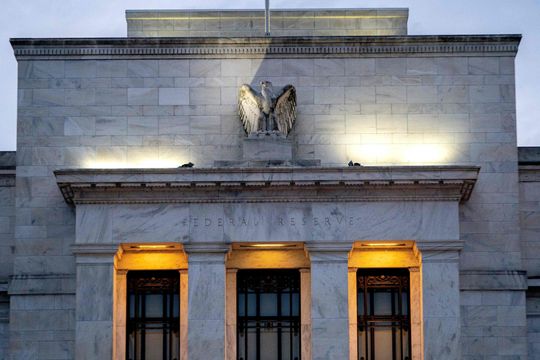Once one of Wall Street’s most vocal bulls, JP Morgan Chase & Co. equity analyst Marko Kolanovic, released a much more downbeat outlook for stocks on Wednesday, calling for equity prices to stumble early next year as the Federal Reserve’s interest-rate rises batter the U.S. economy.
Two weeks ago, Kolanovic said that he felt the rebound in stocks was overdone after the October consumer price index data showed some stabilization in inflation. Now, he expects market ructions caused by the Federal Reserve will eventually force the central bank to back off, or even pivot, as the Fed’s “overtightening” slows the economy.
While the Fed’s rate hikes might crush stocks during the first half of next year, Kolanovic takes a more optimistic view for the second half of the year.
“The good news is that central banks will likely be forced to pivot and cut interest rates sometime next year, which will result in a sustained recovery of asset prices, and subsequently the economy, by the end of 2023,” he said.
Still, these latest comments mark a significant shift from Kolanovic’s more optimistic near-term outlook espoused during the summer months, while stocks were rebounding from the 52-week lows reached in June. In the note, he attributed his decision to abandon his once “positive” outlook on shifting expectations for the level of the terminal rate for Fed funds.
As the Fed’s rate hikes and balance sheet runoff batter markets and the economy, Kolanovic believes stocks will revisit their recent lows “some time between now and the end of the first quarter of 2023.”
This outlook is notably not far removed from the near-term view being espoused by Morgan Stanley’s Michael Wilson.
The S&P 500 SPX, +3.09% traded at its lowest intraday level in nearly two years on Oct. 13, as did the Dow Jones Industrial Average DJIA, +2.18% and Nasdaq Composite COMP, +4.41%. The Dow has risen more than 5,000 points off of that day’s lows.
Ultimately, a softening U.S. economy, weaker corporate earnings, and higher interest rates will conspire to send equities lower once again, Kolanovic said.
“We believe that 1) previous lows in equity markets are likely to be re-tested as there may be a significant decline in corporate earnings, at a time of higher interest rates (implying lower P/Es and lower prices relative to the 2022 lows); and 2) we are inclined to think that this market decline could happen between now and the end of the first quarter of 2023,” Kolanovic said.
Although the Fed’s decision to start shrinking its balance sheet could also play a role in any market turmoil that might emerge before year’s end.
“One can imagine market turmoil as soon as at the end of this year similar to the 2018 episode (QT and manufacturing recession), or a selloff post the potentially weak Q4 earnings season in February next year,” he said.
To be sure, there are still several “mitigating factors” that could help support stocks, or even send them higher, in the near term. One of this is relatively low institutional investor positioning, Kolanovic said.
Also, a surprisingly resilient American consumer could help protect the U.S. economy and delay the onset of a recession, while a premature decline in inflationary pressures could allow the Fed to pivot back to cutting rates “without significant economic damage.”
It’s also possible that a surprisingly resilient American consumer, or a material decline in inflation, could delay the onset of a recession, or even allow the Fed to pivot “without significant economic damage.”

